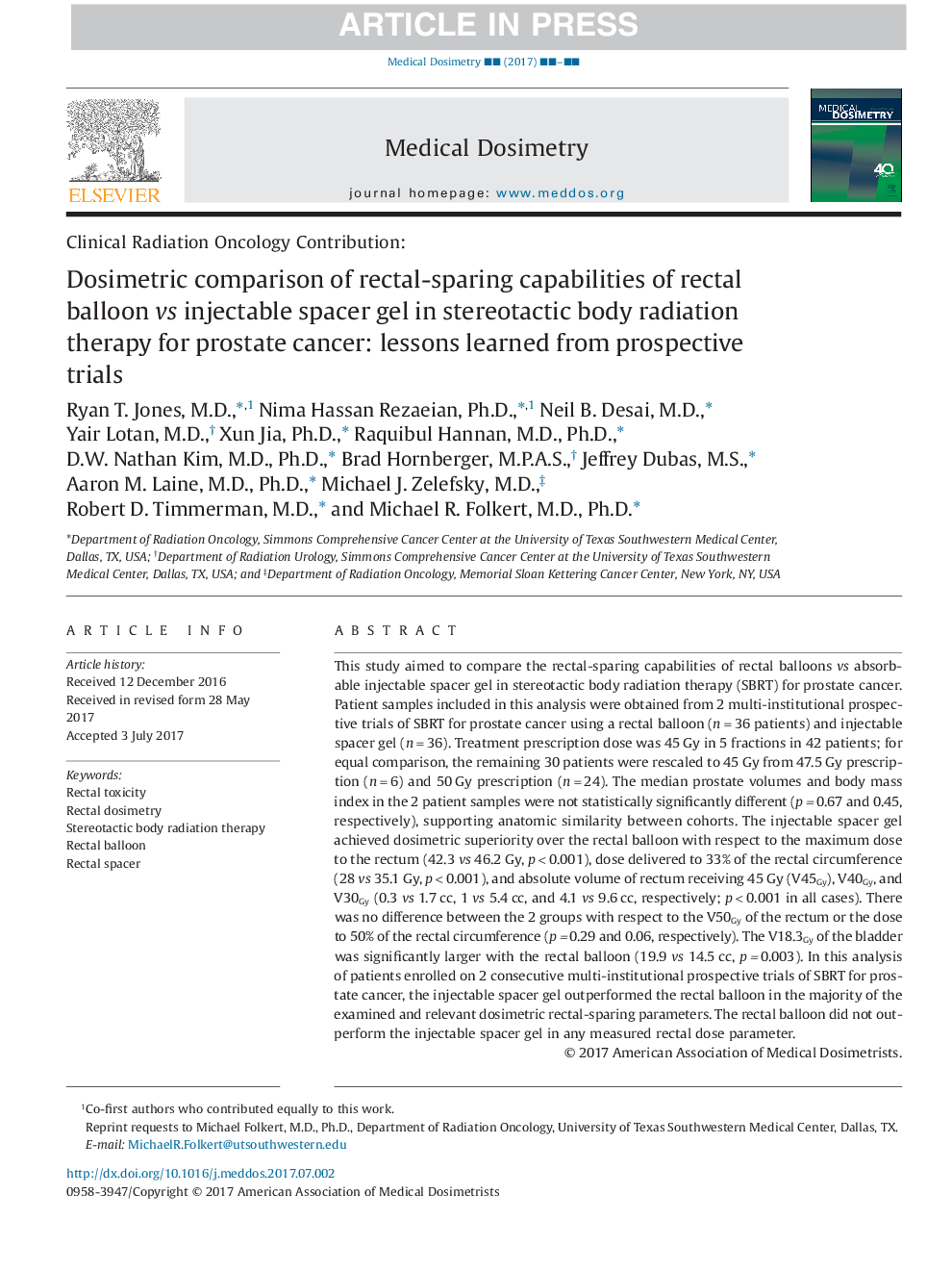| Article ID | Journal | Published Year | Pages | File Type |
|---|---|---|---|---|
| 8248336 | Medical Dosimetry | 2017 | 7 Pages |
Abstract
This study aimed to compare the rectal-sparing capabilities of rectal balloons vs absorbable injectable spacer gel in stereotactic body radiation therapy (SBRT) for prostate cancer. Patient samples included in this analysis were obtained from 2 multi-institutional prospective trials of SBRT for prostate cancer using a rectal balloon (nâ=â36 patients) and injectable spacer gel (nâ=â36). Treatment prescription dose was 45âGy in 5 fractions in 42 patients; for equal comparison, the remaining 30 patients were rescaled to 45âGy from 47.5âGy prescription (nâ=â6) and 50âGy prescription (nâ=â24). The median prostate volumes and body mass index in the 2 patient samples were not statistically significantly different (pâ=â0.67 and 0.45, respectively), supporting anatomic similarity between cohorts. The injectable spacer gel achieved dosimetric superiority over the rectal balloon with respect to the maximum dose to the rectum (42.3 vs 46.2âGy, pâ<â0.001), dose delivered to 33% of the rectal circumference (28 vs 35.1âGy, pâ<â0.001), and absolute volume of rectum receiving 45âGy (V45Gy), V40Gy, and V30Gy (0.3 vs 1.7âcc, 1 vs 5.4âcc, and 4.1 vs 9.6âcc, respectively; pâ<â0.001 in all cases). There was no difference between the 2 groups with respect to the V50Gy of the rectum or the dose to 50% of the rectal circumference (pâ=â0.29 and 0.06, respectively). The V18.3Gy of the bladder was significantly larger with the rectal balloon (19.9 vs 14.5âcc, pâ=â0.003). In this analysis of patients enrolled on 2 consecutive multi-institutional prospective trials of SBRT for prostate cancer, the injectable spacer gel outperformed the rectal balloon in the majority of the examined and relevant dosimetric rectal-sparing parameters. The rectal balloon did not outperform the injectable spacer gel in any measured rectal dose parameter.
Related Topics
Physical Sciences and Engineering
Physics and Astronomy
Radiation
Authors
Ryan T. M.D., Nima Ph.D., Neil B. M.D., Yair M.D., Xun Ph.D., Raquibul M.D., Ph.D., D.W. Nathan M.D., Ph.D., Brad M.P.A.S., Jeffrey M.S., Aaron M. M.D., Ph.D., Michael J. M.D., Robert D. M.D., Michael R. M.D., Ph.D.,
